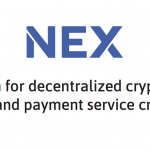One of the things that has generated the most buzz around cryptocurrencies in the tech community is their potential alternate uses. A distributed verification system is certainly a revolutionary way to manage money, but these types of networks have the potential to do much more than enable transactions. Primecoin offers one such alternate application: A cryptocurrency that, in addition to functioning as a form of money, uses the processing power of its users to conduct mathematical research.
Like many cryptocurrencies, Primecoin uses a proof-of-work system. Instead of using an arbitrarily difficult cryptography problem, Primecoin asks users to find special prime number chains that are of particular interest to the scientific and mathematical community. These chains are very difficult to discover and would normally require researchers to buy time on a costly dedicated server in order to generate. Finding these chains can have far-reaching implications for physics and other disciplines.
Primecoin was created by a person or group of people who use the pseudonym Sunny King. This entity is also related with the cryptocurrency Peercoin.
FEATURES.
Very fast confirmations.
Unlike Bitcoin, where transactions take an average of ten minutes to confirm (eight minutes in practice since the difficulty must constantly catch up to increasing mining power), Primecoin blocks come at a rate of one per minute. This allows secure transactions to be made much more quickly; six confirmations may take fifty minutes in Bitcoin, but they take only six minutes in Primecoin.
Prime proof of work.
Instead of SHA256 hashes, the proof of work protocol in Primecoin requires miners to find long chains of prime numbers. There are three specific types of chains that are of interest:
- Cunningham chains of the first kind. The rule is that each prime in the chain must be one less than twice the previous. The first Cunningham chain of length 5, for example, consists of the following six primes: 1531, 3061, 6121, 12241, 24481
- Cunningham chains of the second kind. Each prime must be one more than twice the previous. Here, the first length-5 chain appears much sooner: 2, 5, 11, 23, 47.
- “Bi-twin” chains. These are chains of pairs of twin primes, or primes that are 2 units apart from each other, with the average of each pair being twice the average of the previous pair. Each bi-twin chain must obviously have even length; the first chain six primes long is: 211049, 211051, 422099, 422101, 844199, 844201
Note that a bi-twin chain is essentially a Cunningham chain of the first kind and a Cunningham chain of the second kind rolled into one; the first numbers of each pair follow the recurrence that each one is one more than twice the previous (211049 * 2 + 1 = 422099, etc), and the second numbers of each pair are similarly one less than twice the previous.
These types of prime numbers chains were chosen since finding a prime chain gets exponentially harder as the chain length increaces, yet they are reasonably sized for efficient verification; in order to act as proof-of-work for cryptocurrency, the work needs to be efficiently verifiable by all nodes of the network even by consumer-grade processors. This would require the primes not to be too large, such as record-breakingly large.
More so, using a formula involving the length of the prime chains, and Fermat’s test, the developers were able to implement a difficulty formula that would increase at a mostly linear rate with increasing hashing power.
Smooth and frequent difficulty adjustment.
Unlike Bitcoin, which adjusts its difficulty to exactly match the target rate of 1 block per 10 minutes every 2016 blocks (roughly two weeks), Primecoin adjusts its difficulty slightly every block, nudging it toward the target rate in an exponential decay pattern. For example, if network hash power (or rather, prime generation power) suddenly doubles, the next block would be 0.02% harder than the previous, increasing the amount of work required per block to 186.5% of the original after one week and 198.2% after two weeks, assuming no further mining power increases take place.
Block “difficulty” is a metric that continuously re-calculates and adjusts after a certain number of blocks are created in the blockchain (in Primecoin’s case, this is after every block).
The higher the hashing power being thrown at the network, the more difficult the process of solving math problems becomes (a process more like a lottery) for miners on the network—making it harder for them to earn the block reward. Accordingly, if less miners participate in the network (for market or other reasons), the block difficulty can adjust downward as well, and become less difficult.
Self-adjusting block reward.
Bitcoin is known for its controlled currency supply algorithm, which guarantees that only 21 million bitcoins will ever be generated, as well as specifying the rate at which these bitcoins will come out. Primecoin follows a different path. The number of Primecoins released per block is always equal to 999 divided by the square of the difficulty. So, the minting rate is inversely proportional to the difficulty.
So in a way, the number of Primecoins that will be mined will be determined by the progress of its adaptation by the mining community, improvements that will be done to the mining algorithms and ultimately by Moore’s law. When difficulty is dropping (i.e. miners leave the network), more coins are released per block so that they come back in. This ensures network security is maintained without necessarily raising the transaction fee.
Valuable.
One of the criticisms always put against Bitcoin is that the cryptographic computation that provides proof of work has no intrinsic value. This is true – the Bitcoin market places a subjective value on the currency, just as any other commodity. However, at least physical coins can be melted down and used to make something else.
The innovative prime proof-of-work in Primecoin not only provides security and minting to the network, but also generates a special form of prime number chains of interest to mathematical research. Prime numbers are numbers that are only divisible by one or themselves, and no other numbers. This is useful in encrypting internet traffic (e.g. SSL or TLS), because while it’s easy to multiply two prime numbers together, to create a “public key”, it’s difficult to run the calculation in reverse. I.e. It’s a difficult computation to take an exceptionally large number and find its “prime factors”.
Furthermore, while prime numbers have fascinated mathematicians for centuries nobody yet understands how to calculate prime numbers. Instead, we use super computers to find prime numbers by trial and error. They take ever increasingly large numbers and attempt to find their integer (whole number) factors. If there is none (besides one and itself), then it’s a prime number.
That has made prime numbers a highly valuable mathematical resource because of the way they can be used. They are important in cryptography, and used in many key secret encryption systems. The larger the list of known primes grows, and as the value of the numbers increases, the security of encryption methods utilizing them improves. In fact, that the Electronic Frontier Foundation offers cash prizes to groups that find large prime numbers. For example, in 2009 it paid $100,000 for the discovery of a 12-million digit prime.
PRIMECOIN (XPM)OVERVIEW.
Coincapmarket ranking: 269.
Current coin Value: $0.204170 (-14.54%).
Market Cap: $4,198,964.
24hr volume: $499,439.
Circulating Supply: 20,566,020 XPM .
The currency symbol of Primecoin is the Greek letter psi (Ψ). This letter is chosen as a tribute to Riemann, as its shape symbolizes the Riemann zeta function (there is a graphical rendering used in Primecoin-Qt Windows setup screen). The horizontal bar not only standardizes to currency symbol convention, but also symbolizes one of the highest jewels of math - Riemann hypothesis.
Wallets.
Exchanges
- BTC-e
- Cryptsy BTC LTC with XPM Market Section by BitJohn and bigvern
- Crypto-Trade USD BTC PPC by neotrix
- Vircurex USD EUR BTC PPC
- Coins-E by minus
- Coinmkt
- btc38(比特时代) CNY
- Bter(比特儿) CNY BTC
- btcltc(比特莱)
- CoinEx
- Gatecoin (Under Development)
Payment Processors
- Coin Payments by pr0d1gy
Mining Pools and Software
- yPool
- Beeeer
- net
- Joe’s Pool (Under Testing)
- jhPrimeminer for yPool
- CloudSigma mining
- Host for Bit XPM Cloud Mining Service by maco
IN CLOSING.
Primecoin is the first cryptocurrency on the market with non-hashcash proof-of-work, generating additional potential scientific value from the mining work. Why then are more investors not seeing the value? Perhaps it’s because there is no way for current token holders to benefit from the potential value inherent in the product the blockchain creates.
To solve this problem, it should be possible to patent a prime chain such that royalties from its use will be divied up by all token holders with the miner gaining a substantial percentage of the dividends. Pending such a reformation, developers will return to this project, the price would skyrocket and it would create a model for scientific research that had not been possible.
[currencyprice currency1=”XPM” currency2=”usd,eur,btc”]
[currencygraph currency1=”XPM” currency2=”usd”]



















